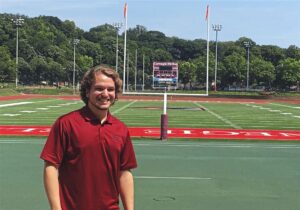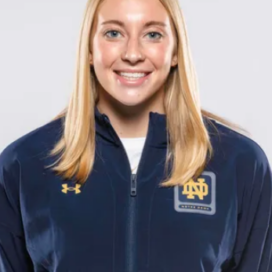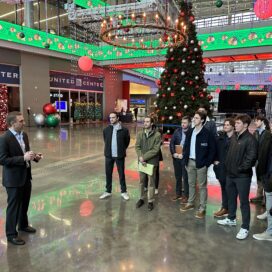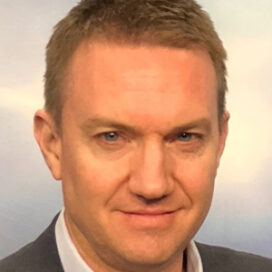Uncovering the Complexity of Football: Ron Yurko’s Data Analysis Journey
Author: Marshall V. King

Ron Yurko – Professor for Department of Statistics and Data Science at Carnegie Mellon University
From Fan to Leader: Analyzing Football Data with Ron Yurko
Ron Yurko has always loved football as he grew up in Pittsburgh.
“Saturdays were Penn State football. Sundays were for Steelers,” he says.
Now, as assistant teaching professor at Carnegie Mellon University, he’s becoming a leader in analyzing the data being gathered by the college and professional football players. The game is complex and moves fast through the four quarters of a contest. “It’s such a complex sport: 22 players on the field moving in various ways,” he says.
Yurko visited the Mendoza College of Business at the University of Notre Dame on September 14-15 to speak to students in the undergraduate and Master of Science in Business Analytics programs about how new tracking data is changing the National Football League and analysis of college football. He also told them and members of the Notre Dame Sports Analytics Club about the tremendous opportunities that are emerging for those who can do sports analytics.
From Yards to Chips: How Yurko Analyzes Football Data to Predict Player Performance
The data has gone from tracking yards per carry to players being tracked by chips in the shoulder pads every tenth of a second. The data collected for each player includes location on the field, speed, direction, and the angle a player is facing. A chip in the football adds even more data.

Ron Yurko – Professor at Carnegie Mellon University
Yurko is exploring the data, and, with two other researchers, published a paper in American Statistician assessing the movement of pass rushers. They created a metric called STRAIN that used the speed of rushers moving toward the quarterback, relative to distance. “That measure is actually more predictive of future sacks, hits, and hurries than previous sacks, hits, and hurries,” he says.
Much of the research being done is on what to actually do with all the data being collected. Yurko had early success in modeling NFL play-by-play data, creating a package with the R programming language. He was a graduate student when he shared it on what was then called Twitter and gained acclaim. The package has been used by The Athletic, the Wall Street Journal, and 538 and has evolved to become nflfastR.
He urged students to share their work, particularly as they work with Notre Dame athletic teams. “Sports serves as such a great pathway for people to obtain skills that are portable across a variety of industries,” he says. “It’s great that the students are doing this fantastic work with the teams. They need to promote themselves, sharing what they’re doing on LinkedIn and social media.”
The Growing Role of Analysts in Professional Football Teams
Professional teams don’t just want talent on the field. They want analysts who can help assess what’s happening on the field and find new talent.
Because of the speed of the intricate game, analysis doesn’t often enter into decision-making during the game, but analysis can happen the rest of the week. At the same time, NFL teams are always preparing for the NFL Draft. Data is now augmenting conventional scouting. As the amount of data being collected from college players grows, NFL teams are trying to build techniques to analyze those players.
Data can show the accuracy of a quarterback and machine learning can help parse that. Using video to create data can show the difference between two quarterbacks. That may impact how a team drafts. “The NFL Draft is the cheapest way for an NFL team to add talent. It’s the most important moment of the year for a team to improve their current circumstances,” he says.
Empowering the Next Generation of Sports Analysts: Yurko’s Summer Program and Carnegie Mellon Sports Analytics Conference
 Yurko oversees a summer program for students working at sports analytics. Sixteen of them spend the summer at Carnegie Mellon and are getting jobs in a range of sports. The Pittsburgh Penguins have hired two and the Pittsburgh Pirates hired four of the 16 students in the program for this past summer.
Yurko oversees a summer program for students working at sports analytics. Sixteen of them spend the summer at Carnegie Mellon and are getting jobs in a range of sports. The Pittsburgh Penguins have hired two and the Pittsburgh Pirates hired four of the 16 students in the program for this past summer.
The Carnegie Mellon Sports Analytics Conference is another place students can showcase their work. Yurko invited Notre Dame students to attend November 10-11.
Notre Dame’s students in the Sports Analytics Club know their work outside the classroom can help them land a job in the sports analytics industry. He was impressed with the maturity, eagerness, and excitement of the students he met at Notre Dame. “They’re asking careful questions, indicating they’re really listening to what I’m saying and thinking about the implications of their methods in a lot of practical ways,” he says.






